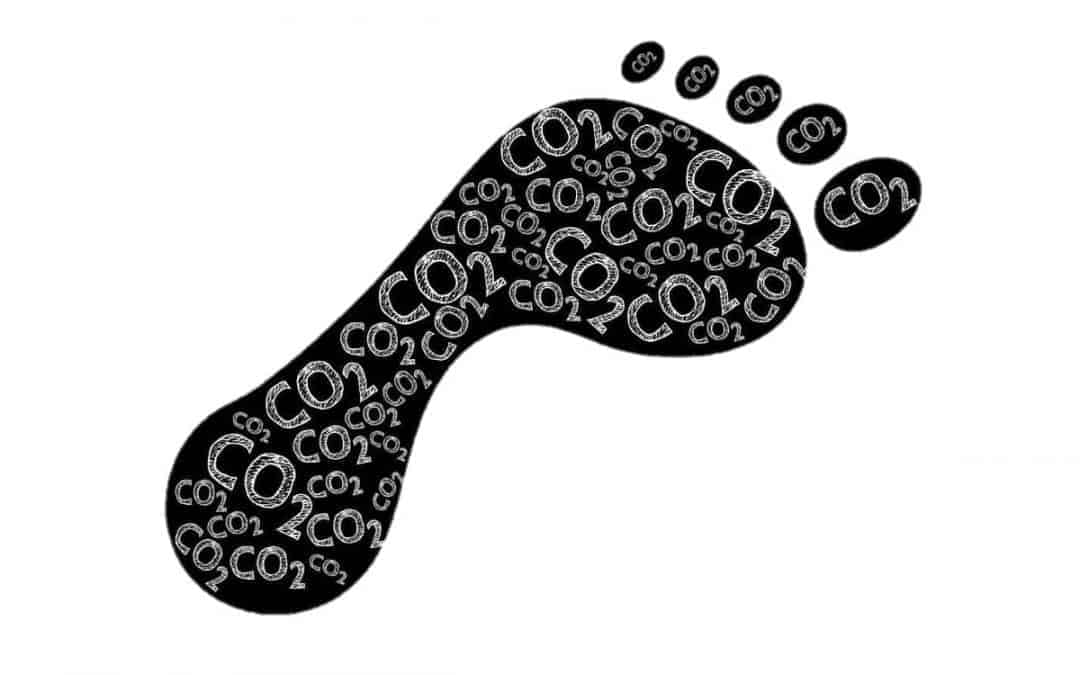What is a carbon footprint?
A product’s carbon footprint represents the total amount of greenhouse gases that are emitted directly or indirectly when a product is created. However it is not just individual products that we can calculate for. Indeed a carbon footprint can be associated with an individual, organisation, product or an event.
How is a carbon footprint calculated?
Given climate change is one of the biggest challenges humanity is facing, a carbon footprint is an important piece of information for people to understand their impacts on the world around them. Calculating an accurate carbon footprint is very complicated and requires a lot of detailed information. There are several different methodologies available but the widely accepted way to measure a carbon footprint is activity data x emission factor:
Activity data is the parameter that defines the level of activity that generates greenhouse gas emissions, including direct emissions (e.g. fuel consumption, manufacturing and refrigerant systems), indirect emissions (e.g. lighting) and greenhouse gas emissions that an organisation can influence but does not control (e.g. transporting raw materials to make products and employees commuting to work in vehicles not owned by the company)
Emission factor is amount of greenhouse gases emitted for each activity
What is the carbon footprint of different packaging materials e.g. cardboard/ shrinkwrap/ plastic?
The creation of plastic is responsible for 4% of global greenhouse gas emissions whereas cardboard only accounts for around 1%. Although on the face of it cardboard appears to be more sustainable than plastic overall, it still uses considerable resources. The creation of cardboard uses more energy than plastic, produces more waste materials and can result in deforestation if it is not sustainably sourced. Another factor to note is transport; cardboard is heavier and more bulky than plastic meaning higher fuel consumption when transported. Although recycling of cardboard is more energy efficient than recycling plastic (due to lower water consumption), contaminated cardboard (e.g. with food) is often unable to be recycled so it must either be composted or thrown away, so it will end up in landfill.
Environmentally-friendly shrinkwrap has an even smaller carbon footprint than cardboard as it is generated from renewable resources, plus there are shrinkwrap materials available that can be composted or recycled. Shrinkwrap takes up very little space compared with cardboard packaging so with this in mind it can be more environmentally friendly.
How can I reduce my own carbon footprint as a consumer?
Reducing your carbon footprint doesn’t happen overnight, however, we can all make small changes to our behaviour that will improve our carbon footprint over time. Reducing your carbon footprint can help you live a healthier, happier lifestyle, as well as save money. Examples of changes that can reduce your carbon footprint without requiring drastic changes to your lifestyle include:
Eating less meat
Reducing food waste
Using less water (harvest rainwater for watering plants)
Reducing energy consumption e.g. line drying clothes instead of tumble drying
Using the internet less (browsing online, uploading images, playing music and streaming video all generate carbon dioxide!)
Using reusable products wherever possible (bags/coffee cups/ food containers etc.)
Insulating your home
Reusing and recycling as much as possible
Shop local – especially for food
How can my business reduce its carbon footprint?
Did you know that just 100 companies are responsible for 71% of all global greenhouse gas emissions! This can make reducing your personal footprint feel a little futile, but it’s still important for individuals to do their bit. Many people are boycotting businesses with poor environmental credentials, so it is more important than ever for businesses to reduce their environmental impact. There are various things that can be done, such as:
Reducing carbon dioxide emissions
Improving energy efficiency/move to renewable energy
Implementing a corporate social responsibility strategy
Allowing staff to work from home (if feasible)
Switching from petrol to electric company cars
Minimising use of single-use plastic
Reducing, reusing, recycling products wherever possible
Environmentally responsible packaging
For most companies that make products there will be packaging involved in their business processes. Sustainable packaging has revolutionised the packaging industry. Compostable packaging only uses small amounts of carbon when generated, reduces the volume of waste sent to landfill and incineration and releases useful nutrients when biodegraded. Environmentally responsible packaging will improve customers’ perception of your brand as well as contributing to preserving the planet for future generations.
The responsibilities of consumers and producers to be more environmentally conscious
It is the responsibility of both consumers and producers to make changes to reduce their carbon footprint. Many companies are moving away from the linear model of production-distribution-use-disposal to a circular economy model that encompasses reusing, remanufacturing, refurbishing and recycling. If consumers and producers all make small changes for the better, a collective impactful improvement on everyone’s carbon footprint will be achieved.
How Kempner can help
At Kempner we offer a wide range of eco-friendly shrinkwrap film options that are recyclable, compostable and/or biodegradable. We are very happy to provide our customers with guidance on selecting the most environmentally-friendly packaging options to suite your requirements. Don’t hesitate to get in touch if you would like more information about reducing your company’s carbon footprint.
Why carbon footprints do not tell the whole story
Although it is an important measure, it’s crucial to remember that a carbon footprint does not tell us anything about the positive climate impacts a company or individual is also responsible for. There has been increasing emphasis placed on ecological footprints, which begin to incorporate the wider impacts of our activity on the environment and the ecology. Click here to find out more about your ecological footprint and see what you can do to be more environmentally responsible.


